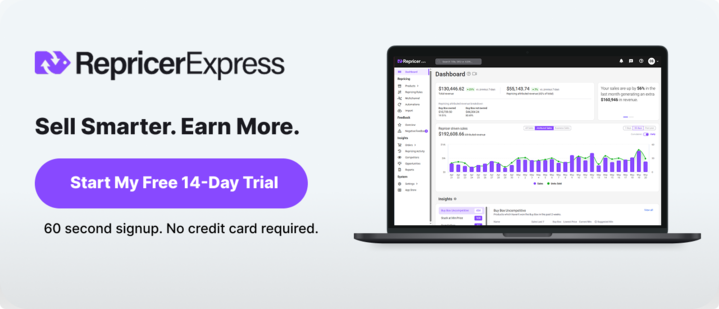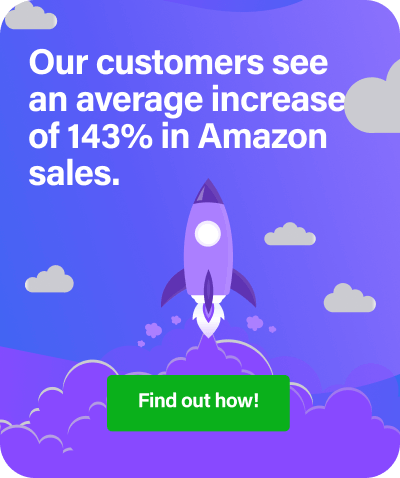How do you start with Amazon Advertising and pay-per-click (PPC) without wasting budget? Short answer: pick one goal, launch a simple Sponsored Products campaign on a few proven SKUs, keep bids and budgets tight, and review search term reports twice a week to add winners and block money-wasters. Once the basics work, you can layer in Sponsored Brands, video, and audiences to scale.
In this guide, you’ll get a step-by-step setup for your first campaigns, clear explanations of bids, match types and negatives, the handful of metrics that matter, and simple ways to scale with Sponsored Brands, video, and audiences.
What is Amazon PPC and why does it matter?
Amazon PPC places your products in front of shoppers when they’re already searching or browsing, and you pay only when they click. The trick is showing up for the right shopper at the right time with a price and page that convert.
That much intent means even small wins in visibility can translate into real sales. If your listing looks great and you hold a decent Buy Box share, paid clicks can accelerate momentum.
Pro tip: For listing visibility, remember to tighten SEO and keyword optimization to help ads convert better.
eCommerce accounted for 17.9% of US retail sales in Q4 of 2024.
What are the main Amazon ad types?
Here’s what you get and when to use each.
Sponsored Products
These ads promote a single product in search results and on product pages, so they catch shoppers with high intent. Start here with one automatic and one manual campaign, then move winning queries into an exact match. Make sure your price and listing are ready though, because this format converts best when the page already works.
Sponsored Brands
These banner-style ads feature your logo and up to three products, and they can link to your store or a custom landing page. Use them to win top-of-search on category terms and to highlight a small range shoppers can compare quickly. Keep the headline simple and match the creative to the products you’re showcasing.
Sponsored Display
This format uses audience and product targeting to reach shoppers on and off Amazon, which makes it ideal for retargeting product viewers and defending your detail pages. Start with product targeting on competitor ASINs and on your own listings to keep rivals from poaching traffic. Keep bids modest, watch frequency, and measure assisted sales as well as direct clicks.
Sponsored Brands advertiser spend rose 23% year over year in Q1 2024.
How to set a realistic goal and budget
Start with one clear target per campaign so you can judge results without guesswork.
Launch or visibility goal
You want traffic and early sales for a new ASIN, so treat this as a learning phase. Run one automatic and one manual campaign, keep bids modest, and accept a higher advertising cost of sales (ACOS) while data builds. Mine the search term report twice a week, move converting queries into exact match, and add negatives to stop leaks. Make sure the listing looks great and has enough stock to handle a small bump.
Profit goal
You want steady sales at a sustainable ACOS on proven SKUs. Set a clear ACOS target based on contribution margin, then focus spend on exact and phrase keywords that already convert. Trim bids on weak terms, add negatives fast, and watch placement reports to avoid expensive, low-return slots. Keep pricing floors in place so Buy Box share and profit move together.
Brand goal
You want top-of-search coverage on important category terms to lift awareness across your range. Use Sponsored Brands and video with a simple headline and three complementary products, and keep creatives consistent with your Store. Track new-to-brand alongside return on ad spend (ROAS) so you know when awareness spend is paying off. Defend your product pages with product targeting to keep competitors from poaching high-intent traffic.
As a beginner, cap daily budgets low to protect spend while you learn. $10-$20 per campaign can be enough to see patterns in a few days.
To improve your chances of showing up, make sure targeted products are ready to win. Refresh images and bullets, and protect Buy Box share with the right pricing.
197 million consumers shopped over Thanksgiving through Cyber Monday in 2024.
Your first Sponsored Products campaign, step by step
Here’s a setup that works for most new accounts.
-
Choose 3 to 5 SKUs with solid conversion
Pick items with good reviews and stock cover. (Avoid low star ratings or thin inventory during learning.)
-
Start with an automatic campaign
Create one ad group, add those SKUs, and let Amazon test placements and queries. (Set a cautious default bid.)
-
Add a parallel manual campaign
Create a second ad group with a small list of exact and phrase keywords based on your listing terms and what you expect buyers to type.
-
Keep structure simple
Two campaigns, one ad group each, and a clean list of 10 to 20 keywords is enough to start. You can always add more later.
-
Run for a few days, then mine the data
Open the search term report, move converting queries into manual exact, and add blockers for irrelevant terms. Repeat this twice a week.
Bids, match types, and negative keywords explained
Think of bids as your max willingness to pay for a click. Start low, then raise bids on terms that send profitable sales. If bids climb but conversion lags, dial it back.
- Exact match shows your ad only when the shopper’s search matches your keyword exactly, so this gives you the most control once you’ve found proven winners.
- Phrase match shows your ad when a query contains your phrase with words before or after, making it useful for expanding around winners.
- Broad match lets Amazon show your ad to related searches to discover new terms, so use it sparingly and check the search term report often.
- Negatives block words or phrases that waste spend, so add them whenever you see clicks without sales.
Mobile behavior means you need short, clear keywords, strong main images, and crisp bullets to help ads convert once people land on your page.
Shoppers completed 54.5% of online holiday transactions on smartphones in 2024.
What to measure each week and how to act on it
You don’t need every metric on day one. Focus on the few that steer the ship.
- ACOS and ROAS measure efficiency, with ACOS as ad spend as a % of ad sales and ROAS as sales divided by spend, both tracked by campaign and keyword.
- Click-through rate (CTR) shows how compelling your ad and placement are, and a low CTR often signals weak imagery or mismatched keywords.
- Conversion rate tells you whether the landing page, price, and offer are working, so if conversion is low, fix the page before pushing more traffic.
- Search term report is your goldmine for promoting winners and blocking losers, which you should pull this report twice a week during learning and weekly once stable.
- New to brand on Sponsored Brands and some display placements counts first time buyers from your ads, helping you judge whether awareness spend makes sense.
That volume compresses decisions into short windows. A weekly habit of mining search terms and nudging bids matters more than trying to overhaul everything at once.
Consumers spent $15.8M per minute during Cyber Monday’s peak hours.
Simple ways to scale without burning margin
When the basics work, expand slowly by trying these moves:
- Break out winners by putting top keywords or ASINs in their own campaigns with dedicated budgets so performance never gets throttled.
- Add Sponsored Brands with a simple headline and three related products, starting with exact-match on your proven terms.
- Test Product Targeting by placing ads on competitor pages or defending your own listings, beginning with a small set of obvious targets.
- Layer audiences using Sponsored Display to retarget viewers and cart abandoners while keeping bids modest and watching frequency.
- Lift price when you can by testing small increases once you hold the Buy Box and conversion stays strong, while maintaining ad coverage.
Amazon’s advertising services revenue reached $17.3B in Q4 2024, up 18% year over year.
Main takeaways and what to do next
Four big takeaways:
- One goal per campaign keeps decisions simple and speeds up learning.
- Sponsored Products plus a clean search term process is the fastest path to wins.
- Listings and price do half the work, and ads do the other half.
- Scale comes from breaking out winners and protecting margin, not from spending everywhere.
Three things to do this week:
- Launch two campaigns on three SKUs: one automatic and one manual with 10 to 20 exact and phrase keywords
- Pull your first search term report after three days, add two winners to exact, and block five irrelevant terms
- Raise bids 10% on keywords with high ROAS while trimming bids on terms that get clicks without sales
Want pricing, visibility, and PPC to work together so you protect margin while you scale? Book a free demo and we’ll walk you through smart pricing guardrails that support your Amazon PPC strategy.
FAQs
What’s the easiest Amazon ad type for beginners?
Sponsored Products. It is simple to set up, reaches high intent shoppers, and gives you search term data you can act on.
Should I start with automatic or manual targeting?
Do both. Use automatic to discover new terms and manual to control bids on the best ones. Move proven queries from the search term report into manual exact.
What’s a good ACOS for beginners?
There is no universal number. For launches, expect a higher ACOS while you build data. For mature SKUs, set an ACOS target that protects contribution margin and stick to it.
When should I add Sponsored Brands or video?
After Sponsored Products show steady performance. Start with your top keywords, keep budgets modest, and measure new to brand alongside sales.
How often should I optimize?
During the first two weeks, check in every two to three days. Once stable, weekly is fine. Always add winners, block the waste, and tune bids in small steps.



